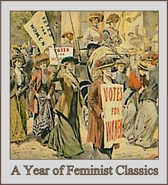Reviewed by Christine-Chioma (also previously reviewed here)
Published: 2011
It's about: The novel chronicles the relationship between famous writer, Ernest Hemingway and his first wife, Hadley Richardson. It depicts the beginning of their relationship and all that comes along with new love: infatuation, hope, and naiveté. As Hadley and Hemingway get married, McLain also gives insightful background into Hadley’s parents’ doomed marriage and Hadley’s depressive and restrictive upbringing. Every stage of their marriage is tragically intertwined with Hemingway’s career from the early struggles to the blissful Paris years. Within this historically accurate fictionalized memoir is a glimpse into life in 1920s as well as a study of marriage and gender.
I thought: I am not very knowledgeable about Hemingway (I’ve only read some of his short stories) but you actually do not need to know anything about him to appreciate the book. McLain is great at allowing the readers to discover the characters. I truly felt like I understood and knew them even when they didn’t know themselves. I loved knowing from the start that the relationship was doomed and being able to see it unravel despite the hopeful manner in which it started. There’s definitely the risk that the inclusion of many famous literary artists (Pound, Fitzgerald, Stein, Sherwood) would overpower the novel; McLain does a fairly good job of not allowing that to happen and their appearances never feel forced. I was actually surprised by how much I enjoyed this novel and that adultery wasn’t handled in the usual laissez-faire way that has become popular these days.
Verdict: Stick it on the shelf!
Reading Recommendations: For anyone who likes historical fiction. It might be even more interesting for a Hemingway fan, but like I said I did just fine without being one. Definitely check out the Random House website after reading it
Warnings: I was also surprised by how clean it was. Some sex scenes but nothing graphic and a little language.
Favorite excerpts:
“Not everyone believed in marriage then. To marry was to say you believed in the future and in the past, too - that history and tradition and hope could stay knit together to hold you up…But some of us, a very few in the end, bet on marriage against the odds. And though I didn’t feel holy, exactly, I did feel that what we had was rare and true—and that we were safe in the marriage we had built and were building every day.”
“It gave me a sharp kind of sadness to think that no matter how much I loved him and tried to put him back together again, he might stay broken forever.”
“Our days looked very much the same as before, but I felt the distance between us and wondered how we’d bridge it to find each other again”
“I knew then that he understood how necessary the promises we made to each other were to our happiness. You couldn’t have real freedom unless you knew where the walls were and tended them. We could lean on the walls because they existed; they existed because we leaned on them.”








